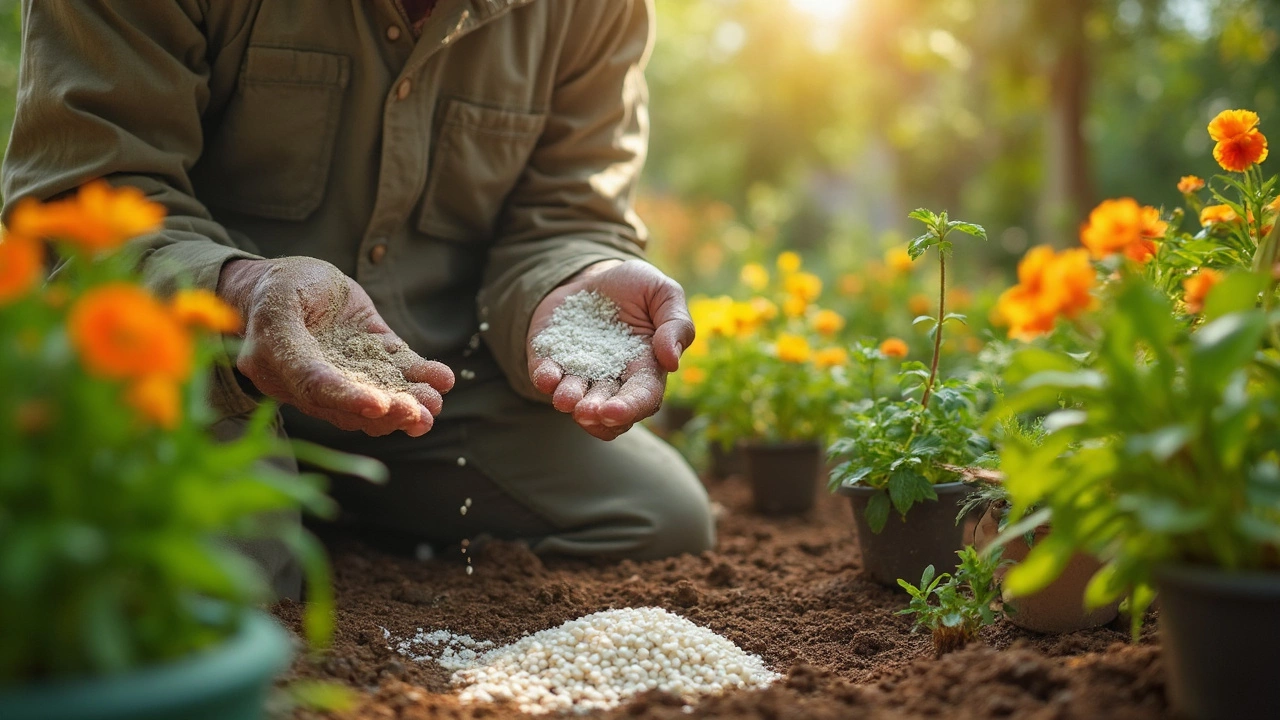Perlite – What It Is and Why It Matters
When working with Perlite, a naturally occurring, expanded volcanic glass prized for its light weight and high porosity. Also known as expanded perlite, it improves aeration in potting mixes, holds water without becoming soggy, and acts as a fire‑resistant filler in construction. Soil amendment, any material added to soil to improve its physical or chemical properties is one of the most common ways gardeners harness Perlite’s texture, because the material creates air pockets that let roots breathe while still retaining enough moisture for healthy growth. Hydroponic growing, soil‑free cultivation using nutrient‑rich water solutions also benefits from Perlite’s inert nature; growers use it as a stable, reusable medium that supports root structures and prevents clogging of pumps. In the building sector, Insulation material, substances that reduce heat transfer in walls, roofs, and floors often incorporate Perlite because its trapped air cells deliver excellent thermal resistance without adding weight. Finally, when mixed with cement, Perlite becomes a lightweight aggregate, a low‑density filler that lowers the overall mass of concrete structures, making it ideal for prefabricated panels and acoustic blocks.
How Perlite Connects Different Fields
Perlite encompasses several sub‑topics that intersect gardening, manufacturing, and sustainability. First, as a soil amendment, it directly influences plant health by increasing drainage and decreasing compaction – a semantic triple: Perlite improves soil aeration. Second, hydroponic growers rely on Perlite for root support, creating the triple: Hydroponic growers depend on Perlite for stable media. Third, construction engineers use Perlite as insulation, forming the triple: Construction engineers apply Perlite to boost thermal efficiency. Fourth, lightweight aggregate producers mix Perlite with binders, establishing the triple: Lightweight aggregate manufacturers incorporate Perlite to cut building weight. These connections show that Perlite is not just a garden trick; it’s a versatile material that solves moisture management, fire safety, and weight reduction challenges across industries.
Below you’ll find a curated mix of articles that dive deeper into these angles. Whether you’re looking for watering schedules that work with Perlite‑rich mixes, exploring the role of lightweight aggregates in modern construction, or learning how hydroponic systems benefit from its stability, the collection offers practical tips, real‑world case studies, and clear explanations that you can apply right away.
Can I Use Styrofoam Instead of Perlite for My Garden?
Thinking of using Styrofoam as a substitute for perlite in your garden soil? While both materials help with soil drainage, they have distinct differences. Explore the benefits and drawbacks of each option and find out whether Styrofoam is a viable alternative to perlite. Get practical advice and interesting insights to make the best choice for your plants.
- manufacturing
- India
- food processing
- garden tips
- rice cultivation
- government schemes
- balcony garden
- urban gardening
- balcony gardening
- profitable business
- business ideas
- plastic manufacturing
- drip irrigation
- plant care
- steel manufacturing
- sustainable gardening
- startup ideas
- steel industry
- flower gardening
- textile manufacturers






